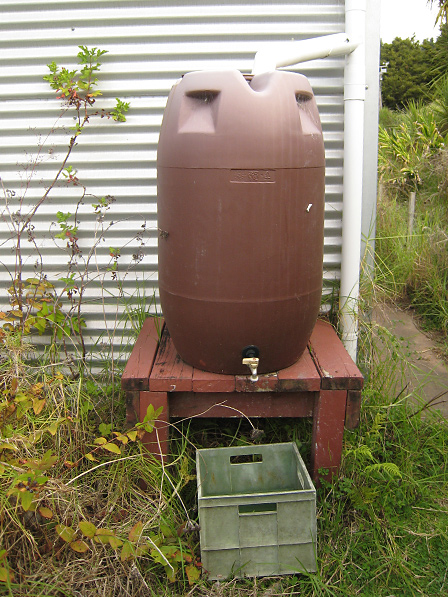We recently swapped roosters with a woman who keeps a variety of chicken breeds in Kerikeri. She had this particularly handsome Barred Rock rooster that she couldn’t bring herself to turn into a meal for her family. Since New Zealand is a village, and the Far North is an even smaller village within the village, news of this roo soon reached us.
We took our biggest Barred Rock rooster down to her, hoping that he would make a succulent meal for our new found friend and her family. She took one look at him, though, and said something like, “Oh, he’s beautiful too… Hmm. Maybe I’ll breed him.” So, he didn’t wind up in a pot, as far as we know.
 Cornelius
Cornelius
The rooster that she wanted us to have had already gone with some mutual friends of ours. Since our roos aren’t ready for the pot, our friends offered to board this Kerikeri roo for us. Several weeks passed by and the time came for him to get settled in on our farmlet—although our roos still aren’t ready for the pot. We met up with our friends and picked up the rooster. (We gave them a sack of organic wheat in appreciation for keeping him for as long as they did.)
They had a different name for him, which was pretty good, but as soon as I saw him out and about, all I could hear in my head was, “Cornelius.”
Now, the friends of ours, who were temporarily keeping Cornelius, thought that he wouldn’t have any trouble with other roosters, since they had been keeping him with some roosters without incident. We decided to let him in with ours, hoping that it would go ok.
And it did go ok, for about five minutes.
But after that, the situation became a bit more tense. That is to say, I witnessed my first cock fight.
Our biggest rooster, who was scheduled to go to Becky’s cousin’s farm, had just managed his first, juvenile and pathetic crow the day before. Well, as far as that rooster knew, he was the boss. He strode over to Cornelius and stared him down. Cornelius cowered a bit. That wasn’t good enough for our Young Punk rooster, who had a peck at Cornelius. I waved a stick around and called out, “Enough of that.” Young Punk persisted in his pecking and Cornelius continued to cower and retreat. I started making my way into the run as this clearly was going… in a sub-optimal direction. Then Young Punk pulled on Cornelius’ comb and, how should I put this…
Young Punk started it, Cornelius was going to finish it.
Obviously, I know very little about keeping chickens, but I knew that this was very different than the rooster confrontations I’d seen so far. This was a full tilt cock fight. The loser was going to be dead, or wish he was. They were swirling all over as I tried to break them up. The hens and other roosters ran away. It couldn’t have been more than thirty seconds by the time I separated them, but they were both bloody. Cornelius, not so much. Young Punk, on the other hand, got his ass handed to him. He would have definitely bought the farm had I not intervened. Young Punk was stunned, wobbly and bleeding. He didn’t mind that I picked him up. As long as he was out out of striking range of Cornelius, he remained calm.
I looked Young Punk over and determined that his injuries were superficial. I asked Becky to call her cousin to see if she was still interested in this roo, and, uh, is it ok if he’s just been in a cock fight with an older, bigger and stronger opponent, and is looking a bit worse for wear?
Claire was keen to have the rooster, even in his current wretched state, so I packed him up in a fish bin and drove him over there. In case you’re feeling bad for Young Punk, definitely don’t. I turned him loose into a beautiful enclosure with about a half dozen Red Shaver hens who thought that he looked pretty good—even if he did just have his clock cleaned by Cornelius. By the way, Young Punk’s new name is Charlie.
Once Cornelius installed himself as the undisputed hierarchical dominator, there was peace with the other roosters. The lesser roos are content to simply stay out of his way.
Should we have brought Cornelius here earlier, before Young Punk/Charlie had any chance of challenging him? Would Cornelius have simply been the de facto boss at that point? After we discussed this situation with a veterinarian friend (and veteran chook lady), she said that we should have pulled the one that was making the play for boss (Young Punk), and then immediately introduced Cornelius. The lower tier roos would have thought, “Meet the new boss, older, bigger and stronger than the old boss,” and peace would have been maintained.
I’ll conclude by posting a video of Cornelius, basking in the glory of his victory, and surrounded by the hens and lesser roosters. His beautiful comb and wattles are a bit battle scarred, but, as you can see, he’s doing just fine.
Note: Make sure that your computer’s volume is turned down toward the end of the video! Don’t say that I didn’t warn you.
A much higher resolution version of this video is available at YouTube:



